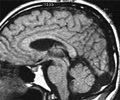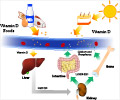Vitamin D levels linked to nonmelanoma skin cancer (NMSC), finds report published in Archives of Dermatology.

Melody J. Eide, M.D., M.P.H., and colleagues from Henry Ford Hospital, Detroit, conducted a study among 3,223 white members of a health maintenance organization (HMO) who had a high probability of developing NMSC. Between January 1997 and December 2001, participants had sought counseling regarding osteoporosis or low-bone density; the mean (average) length of follow-up was 9.8 years. Assessment included levels of serum 25-hydroxyvitamin D (25-OHD, an indicator of vitamin D levels) as well as parathyroid hormone, creatinine and calcium levels. The HMO claims database was used to identify cases of NMSC, including BCC and SCC.
More than two-thirds of participants (n = 2,257) appeared to have insufficient levels of vitamin D. Diagnoses of NMSC were made in 240 patients, including 49 cases of SCC, 163 cases of BCC and 28 cases in which patients developed both forms. Individuals who were not deficient in vitamin D appeared to have an increased risk of developing NMSC, even when researchers considered other risk factors. The association between 25-OHD and NMSC appeared positive but not statistically significant for tumors that developed on body parts not routinely exposed to UV radiation (such as the trunk, arms and legs).
The authors write that their findings contribute "to the limited and conflicting epidemiological investigation regarding the relationship between vitamin D and NMSC." Aside from the role of UV radiation, patients' historical vitamin D levels and consumption of vitamin D supplements could be confounders. The authors suggest that more research into these relationships is needed "to further elucidate the highly complex relationship between vitamin D and NMSC."
Source-Eurekalert















